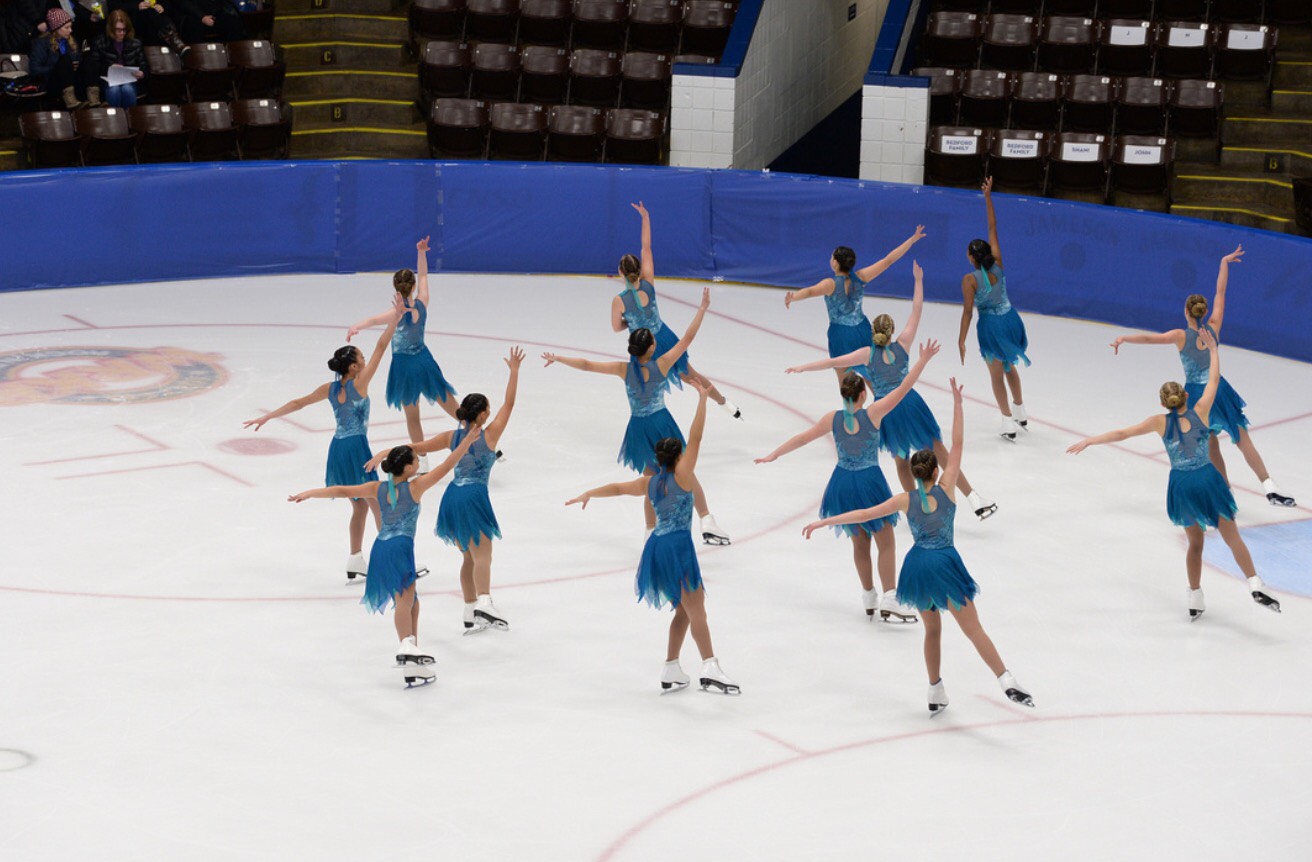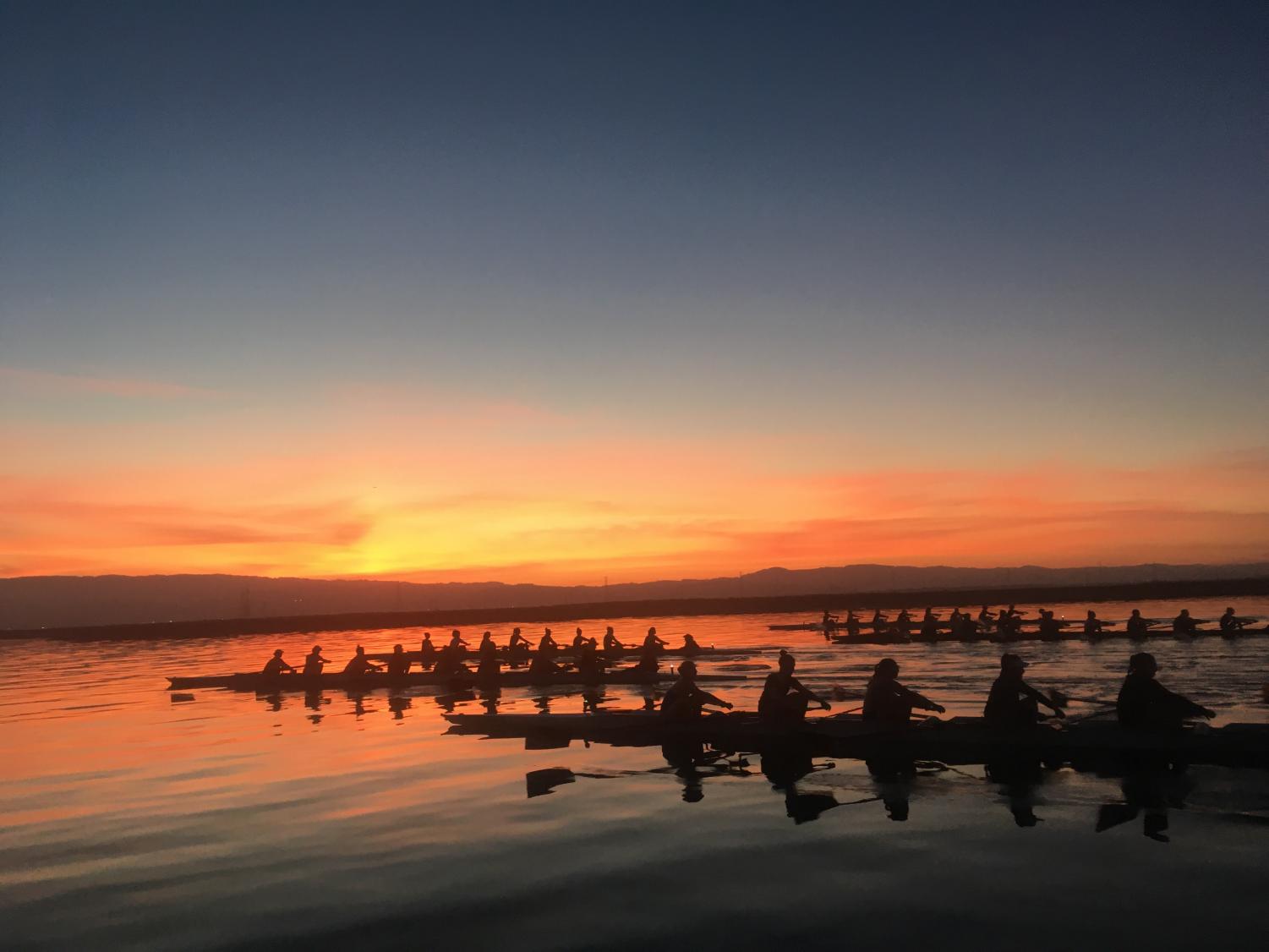Special sports showcased by Sequoia students
March 20, 2019
Camogie
Balancing a sliotar on a racket and lunging it into a goal sounds like something out of Harry Potter. But in fact it’s real, and freshman twins Colleen and Bridget Diether play Irish game camogie competitively.
“[Camogie] is not like any other sport. It’s kind of like a mixture of lacrosse and field hockey, but it’s really its own sport,” said Colleen Diether.
Eleven players on each team defend their goals on each side, aiming to hit the ball, or sliotar, into the net for three points or over the crossbar of the goal for one point. The male version of the game is called hurling, and it is mainly played in Ireland and is not very common in the U.S.
Only seeing it can describe the intensity and complexity of camogie.
“We started because family friends of ours played. They went to Ireland and told us about it. We went just to see what it was and we picked it up,” Colleen Diether said.
Since that time, over four years ago, the Diethers have played with the Gaelic Athletic Association in San Francisco. The team practices two to three times a week during the spring season. Traveling for the sport is inevitable as the next closest team resides in Chicago, and they travel throughout the spring and summer time to go to tournaments all over the U.S..
“I like that it’s different and not everybody knows about it,” Colleen Diether said. “It’s a quick-thinking game, because you have to make split-second decisions, and you can do so many things with it.”
The sport is very tough and physically demanding because players hit each other with sticks. It requires helmets and lots of padding to keep players safe.
“It’s not like soccer where you can push, and it’ll be a penalty,” Bridget Diether said. “You can get away with a lot.”
After visiting Boston, Ireland and more places for competitions, the Diethers brought home many wins. In June 2016, the Diethers competed in Ireland for one of their first notable competitions and won second.
“We went to Boston, and we won that year, and then we went the next year and won that year,” Colleen Diether said. “We went to Buffalo, and we won there. Then we went last year to Boston, and we got second.”
The twins plan to pursue this sport although there are difficulties with how uncommon it is. Some midwest and east coast cities have local clubs, but Ireland is one of the only places they could play in college.
“I’ll probably play as long as I can, but it depends on where you move to,” Colleen Diether said.
Synchronized Skating

Freshman Anahita Memarzadeh has had a passion for ice skating since she was four years old. Ten years later, she’s competing halfway across the country with her team in synchronized skating.
“After watching [people skate], I just remember really wanting to skate,” Memarzadeh said. “And so I started taking lessons, and I’ve been skating ever since.”
After many years of individual skating, Memarzadeh ventured to synchro skating in 7th grade. Now she skates with her team, Tremors, that practices in San Francisco almost once a day for up to 10-12 hours a week. Memarzadeh’s team competes year-round in places as far as Chicago.
“I think the coolest place I went to was Wichita, Kansas. I don’t know why, it’s so random, but it was the coolest place I’ve ever competed in because it was such a small city,” Memarzadeh said. “Everywhere you went, you saw synchro skaters. They all have their jackets, and they all look the same, and it’s so much fun.”
When Memarzadeh’s team competes all over the nation, they often place high, including 1st place.
“Last year we were .03 points away from [going to] Nationals, and this year we were three points away, but we’re really hoping to go next year,” Memarzadeh said.
Ice skating is not an easy sport, especially when it’s synchronized. 12-20 ice skaters skate together to make different formations.
“For me when I’m ice skating, it’s the most freeing thing ever. I also dance, but compared to dance, I have so much more freedom,” Memarzadeh said. “I love everything about it, and there’s so much you can do with the sport.”
Memarzadeh’s passion for synchro skating is very deep, and she plans to continue skating in her future. She hopes to pursue synchro through college either at the select few colleges that offer synchro or at local teams around college. Her end goal is to skate with the Haydenettes, one of the best synchro skating teams globally, that resides in Boston.
“I would love to join them one day,” said Memarzadeh. “It would be a dream come true.”
Crew

16+ hours of practice a week with schoolwork on top is just a glimpse of sophomore Laine Bradley’s life as a rower. She’s rowed in Los Angeles, San Diego and Seattle and she isn’t slowing down.
“Everyone who’s there wants to work hard. It’s a really devoted sport,” Bradley said.
With her team, Bradley has competed up and down the West Coast in well-known races, often placing high. One important competition is Head of the Lake, which is well-known in the crew community and it happens in Seattle.
“When we went to Seattle we got second in our U17 boat, which was super cool,” Bradley said. “That trip was really fun.”
Despite stereotypes, crew is a challenging sport that requires lots of training.
“[One stereotype is] you have really strong arms, but it’s mostly in the legs,” Bradley said. “Some people think it’s not that hard, but in reality, it’s so hard.”
Bradley has to practice in the morning before school some days as well as practices after school, which can make it difficult to juggle school work on top.
“We have two-morning practices Monday and Friday, which go from 5 to 7. The rest of the week is 4 to 6:30. Saturdays, it’s three hours. It’s like 15 hours of practice time, plus extra stretching, it’s probably like 16/17 hours a week,” Bradley said.
Rowing throughout high school and continuing on into college is in the future goal for Bradley.
“I would really love to row in college,” Bradley said. “That’s where I want to be.”
Ping Pong
Ping pong is just a hobby for many people, but freshman Qing Chai has played it competitively for 5 years.
“The first time I started playing ping pong was when my grandpa came to the US and showed me the sport at the Stanford Recreation Center,” Chai said.
Chai often places second and third places when competing in different competitions across California.
“Two years ago, I played at the US Open, and I sometimes compete at local tournaments,” Chai said.
Competitive table tennis can be more difficult than people anticipate, especially at bigger competitions like the US Open.
“The sport is very challenging and challenges me to become quicker in areas like reaction,” Chai said.
Chai doesn’t plan on playing professionally but still has a passion for playing the game.
“I think I’ll just continue to play it,” Chai said. “I think I’ll continue to play in college.”






